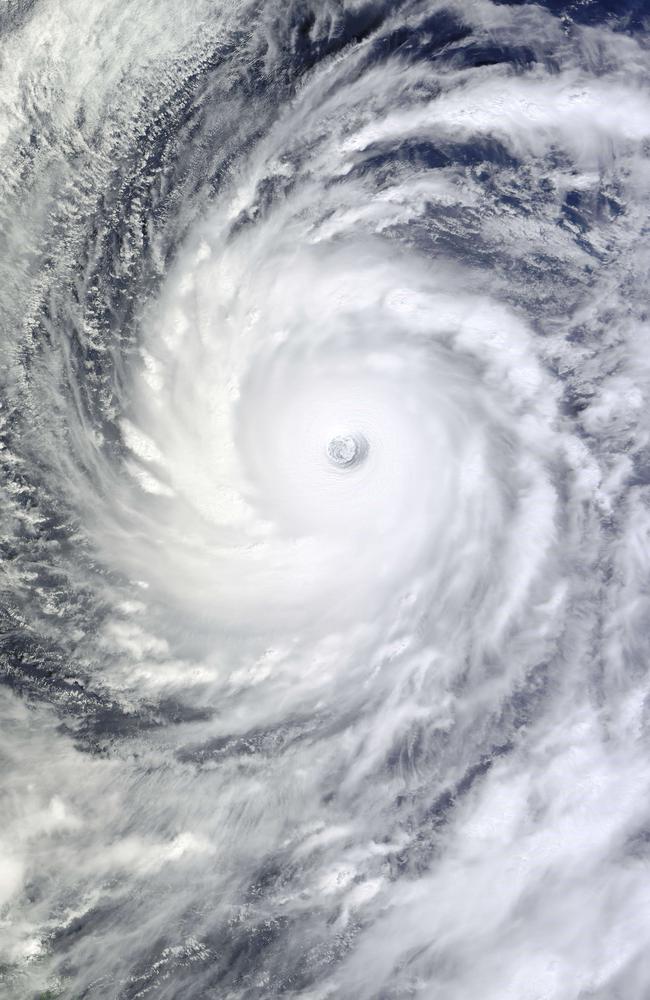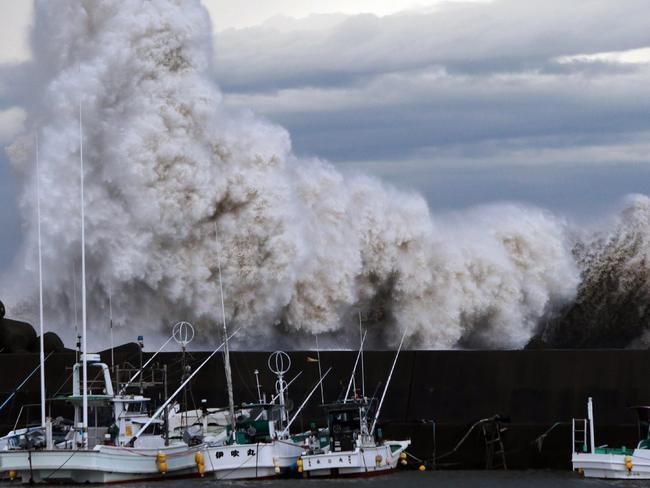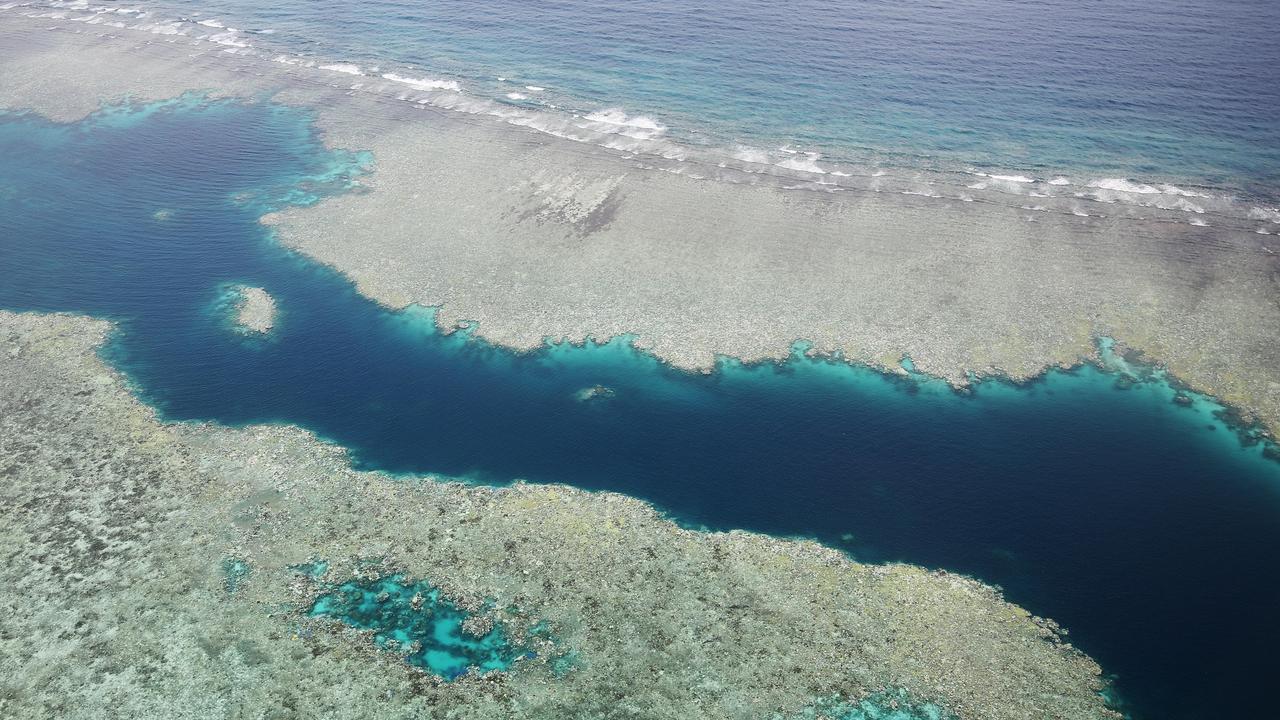Vongfong: Super typhoon on track to hit Japan
WITH Vongfong barrelling towards Japan bringing 15 metre waves and 330km winds, here’s how the mega-storms get named and if you can score one named after you.
technology/environment
Don't miss out on the headlines from technology/environment. Followed categories will be added to My News.
FIFTEEN metre waves and wind gusts of up to 330 kilometres an hour are predicted today as super typhoon Vongfong barrels across the Pacific Ocean in a path of destruction.
The most intense storm of 2014 is currently moving at around 11 kilometres an hour towards the Japanese Island of Okinawa — around 1000km south of Tokyo — which is home to three quarters of the US military bases in Japan.
MORE: Super Typhoon Vongfong becomes most intense storm of 2014
MORE: Cyclone? Typhoon? What’s the difference
It’s currently located around 900 kilometres south southeast of the Kadena on Okinawa, and is expected to track northwest over the next 12 to 24 hours before affecting both Japan and Korea.

Vongfong is the sixth super typhoon to strike this year and is the largest since Typhoon Haiyan which killed over 6000 people in the Philippines in November last year.
It’s intensity has prompted the Joint Typhoon Warning Centre to issue an alert saying winds of up to 324 kilometres an hour are expected today with gusts even stronger, as well as fifteen metre waves.
Satellite images show the eye of the storm measures 42 kilometres round.
Close up of Super Typhoon #Vongfong's eye via @NASANPP VIIRS. Oct. 8, 2014 at 12:13 am EDT. (Image from RAMMB/CIRA) pic.twitter.com/42ziSs0zrN
— NOAA Satellites (@NOAASatellites) October 8, 2014
Japanese residents are bracing for strong winds, torrential rain, high seas and mudslides. It’s also expected to impact on two world racing championships in the country this weekend and comes after French Formula 1 driver Jules Bianchi suffered a horrific crash earlier this week amid rain following typhoon Phanfone which struck the region.
MORE: Jules Bianchi suffers horrific crash
The second lashing comes as the death toll from Phanfone has risen to six, while five other people including two US servicemen remain missing.
That typhoon smashed Tokyo and other major cities during Monday’s rush hour, cancelling around 600 flights and suspending more than 100 bullet train services with many factories forced to close.




Phanfone was downgraded to a low pressure system on Monday as the eye moved out over the Pacific according to Japan’s meteorological agency.
Among the dead are a US military official who was trying to take photos of the storm. Two of his colleagues are still missing and believed to have been engulfed by high waves on Okinawa.
In the Yokohama area, southwest of Tokyo, two men in their 20s and 30s were killed separately as landslides destroyed their homes, a city official said. Another 62 people were injured across the country in storm related accidents.
Via Japan's MTSAT, wide view of Super Typhoon #Vongfong--the strongest tropical cyclone of 2014. pic.twitter.com/jRvmVw1QBw
— NOAA Satellites (@NOAASatellites) October 8, 2014Via @NASANPP's VIIRS day/night band, #Vongfong at 12:44 pm EDT, courtesy of reflected (full) moonlight. (RAMMB/CIRA) pic.twitter.com/t9elFxJ9cu
— NOAA Satellites (@NOAASatellites) October 8, 2014The term ‘super typhoon’ is used to described typhoons that have maximum sustained winds for one minute of at least 240 kilometres an hour. It’s the equivalent of a category 4 or 5 hurricane or a category 5 severe tropical cyclone in Australia, according to the Hurricane Research Division.
The practice of naming cyclones and typhoons was started by an Australian forecaster Clement Wragge in the late nineteenth century, the World Meteorological Organisation reports.
Needing a way to refer to the giant storms than was easier than geographical co-ordinates, Wragge started naming them after politicians he disliked with traits such as “causing distress, erratic behaviour, or frequently changing it’s mind.”

The practice was adopted internationally using female names, but a public outcry soon meant male names were also included. Now, countries in the typhoon region submit names to the Typhoon Committee with names taken in alphabetical order from member countries.
Cyclones that originate in Australia are named by the Bureau of Meteorology based on a pre-approved list of 104 names in alphabetical order. They alternate between male and female names but those that become shorthand for significant cyclones can’t be used again. The list is also coordinated with other countries in the region to avoid double up.
And before you think about submitting your very own name for a cyclone, the Bureau receives “many requests” from the public for cyclones to be named after themselves or their friends.
They said submissions “far out-numbers” the number of cyclones that actually occur in Australia. But, people can write a written request for a name to be added to a supplementary list.
Check out the full list of Australian cyclone names here.
Originally published as Vongfong: Super typhoon on track to hit Japan


